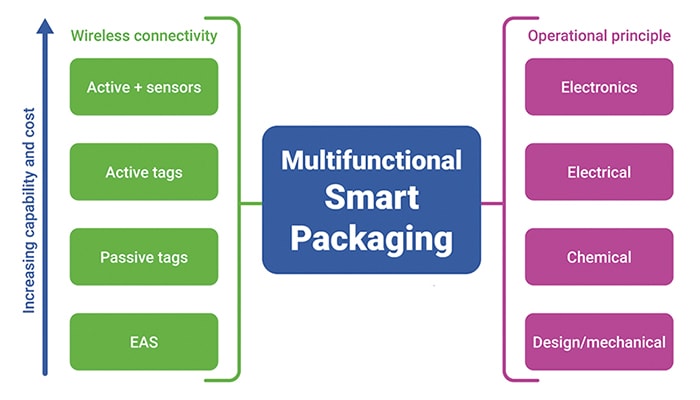Technology Leads the Pack

Packaging used to be simply for protecting and identifying a product; now it helps drive sales. Smart packaging—which uses technology to enhance user engagement, product quality, and supply chain efficiency—is the latest iteration, according to Smart Packaging 2023-2033, a new report from IDTechEx.
Establishing business models that utilize these technologies to unlock value for brands and consumers will grow the smart packaging market to $2.6 billion in 2033, IDTechEx forecasts. This figure covers just the electronics hardware; the smart packaging market value will be much higher if infrastructure, software, and services are included.
Smart packing comprises a range of current and emerging technologies, often with different purposes. These include:
- RFID for wireless item identification—usually invisible to the consumer—as well as other identification technologies, including QR codes and capacitive ink approaches.
- Electronic Articles Surveillance (EAS) for anti-theft—usually invisible to the consumer.
- Data loggers for temperature, shock, vibration, and time and location monitoring.
- Interactive smart packaging including light-up, and measuring, such as smart blister packs.
- Printed, flexible, and organic electronics, including displays, sensors, and batteries.
- Chemical indicators for temperature, frozen chemical visual indicators, and active packaging for produce and pharmaceutical monitoring.
